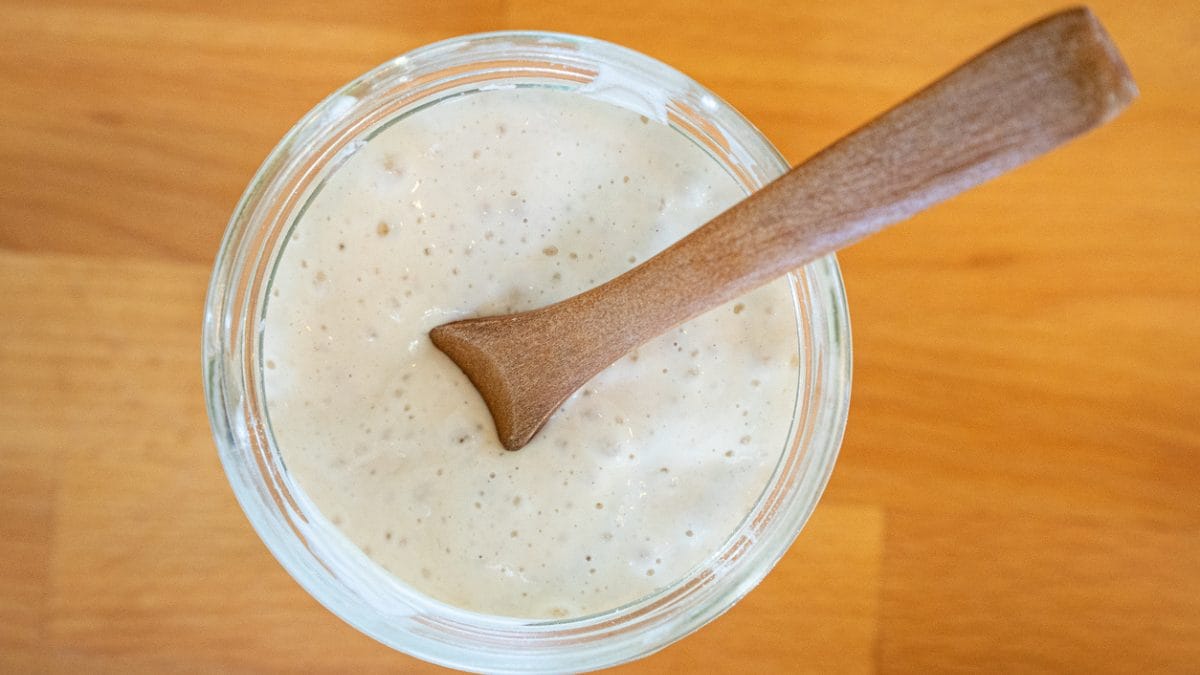
Unlike store-bought yeast, which is a single strain of cultivated yeast, a sourdough starter is a mix of wild yeast and lactic acid bacteria working together. When flour and water are combined and left at room temperature, microbes from the environment, flour, and even your hands begin to feed and multiply. Over time, they create a thriving colony that gives sourdough its rise, tang, and signature crust.
How a Sourdough Starter Works
At its core, a sourdough starter is a simple mix of flour and water, but the real magic comes from the microorganisms that develop inside it.
The Role of Wild Yeast
Wild yeast is naturally present in flour and the surrounding air. Unlike commercial yeast, which ferments quickly, wild yeast takes its time. When given a steady supply of food (flour) and water, these yeasts produce carbon dioxide gas, which forms air pockets and makes the dough rise.
The dominant yeast species in most sourdough starters is Saccharomyces cerevisiae, but other wild yeasts, like Candida milleri, may also thrive. These yeasts are more tolerant to the acidic environment created by bacteria, giving sourdough its characteristic fermentation process.

The Role of Lactic Acid Bacteria
Alongside yeast, lactic acid bacteria (LAB), mainly Lactobacillus species, flourish in the starter. These bacteria produce two key acids:
- Lactic acid: Gives sourdough a mild tang and contributes to its chewy texture.
- Acetic acid: Adds a sharper, vinegar-like sourness and strengthens the dough’s structure.
These bacteria outcompete harmful microbes, preserving the starter naturally and creating the distinct sour flavor that varies depending on fermentation time and conditions.
Feeding and Maintaining a Starter
Keeping a starter alive means regular feeding. Each time you add fresh flour and water, you give the yeast and bacteria more food to consume, which keeps the fermentation cycle active.
- Room temperature storage: Requires daily feeding to stay active.
- Refrigerated storage: Can go a week or more between feedings but needs time to reactivate before baking.
The more consistently a starter is fed, the more predictable and stable its fermentation becomes.

Why Sourdough Starter Affects Flavor and Texture
The balance of wild yeast and bacteria determines how sourdough tastes.
- A shorter fermentation (6–12 hours) creates a milder, less tangy loaf.
- A longer fermentation (24+ hours) allows more acid production, resulting in a tangier flavor.
- A warm environment promotes lactic acid production, leading to a creamier, less sharp taste.
- A cooler environment encourages acetic acid, giving a stronger sourness.
This is why sourdough can taste different depending on location, climate, and how the starter is cared for.
Now you know that there’s so much more to your sourdough starter than flour and water. It’s a living system powered by wild yeast and bacteria. Through fermentation, these microbes create the rise, flavor, and texture that make sourdough unique. Whether you prefer a mild or tangy loaf, learning the science behind a starter helps you control the results and bake better bread.
;Resize,width=767;)
